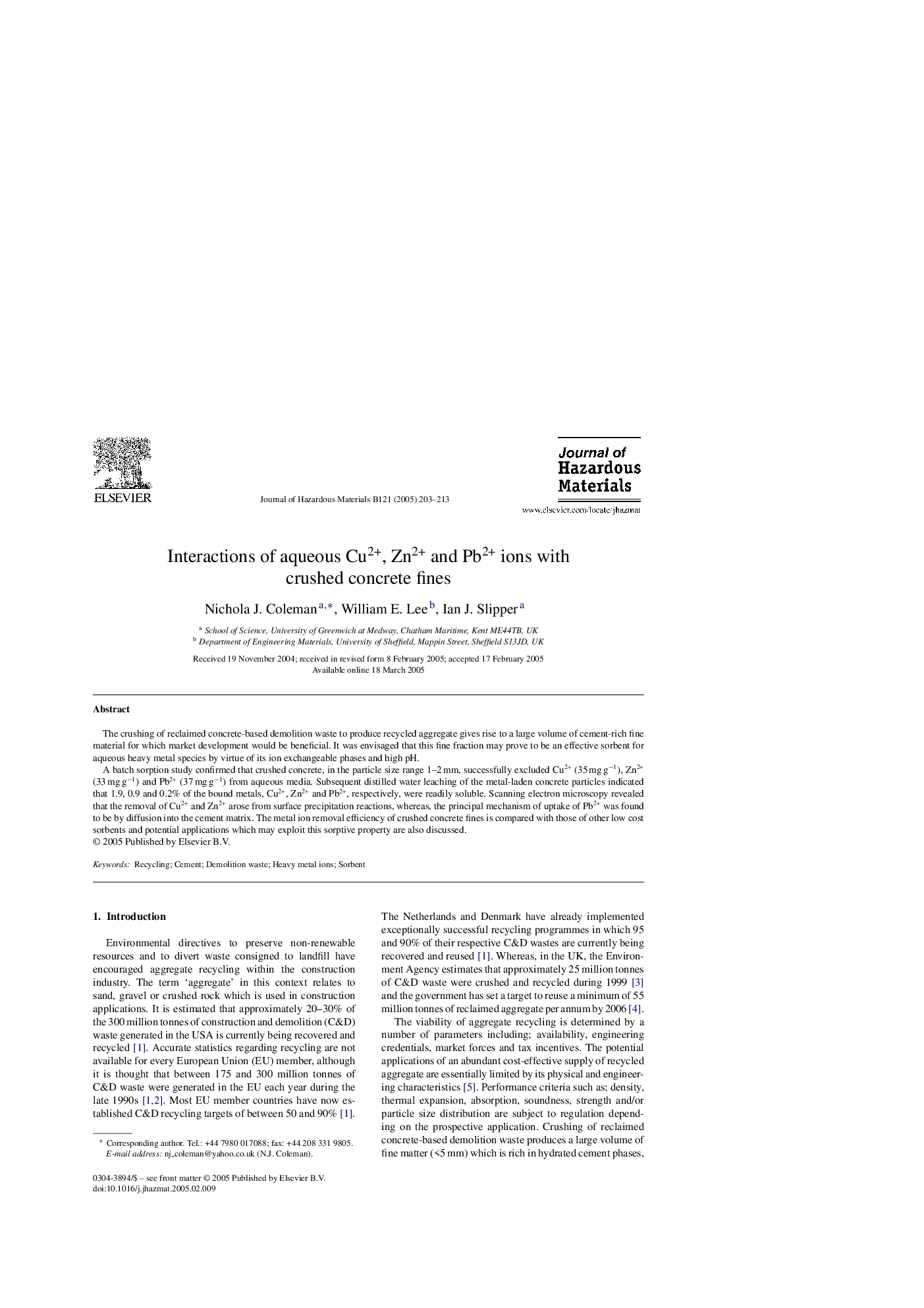| Article ID | Journal | Published Year | Pages | File Type |
|---|---|---|---|---|
| 9674283 | Journal of Hazardous Materials | 2005 | 11 Pages |
Abstract
A batch sorption study confirmed that crushed concrete, in the particle size range 1-2 mm, successfully excluded Cu2+ (35 mg gâ1), Zn2+ (33 mg gâ1) and Pb2+ (37 mg gâ1) from aqueous media. Subsequent distilled water leaching of the metal-laden concrete particles indicated that 1.9, 0.9 and 0.2% of the bound metals, Cu2+, Zn2+ and Pb2+, respectively, were readily soluble. Scanning electron microscopy revealed that the removal of Cu2+ and Zn2+ arose from surface precipitation reactions, whereas, the principal mechanism of uptake of Pb2+ was found to be by diffusion into the cement matrix. The metal ion removal efficiency of crushed concrete fines is compared with those of other low cost sorbents and potential applications which may exploit this sorptive property are also discussed.
Related Topics
Physical Sciences and Engineering
Chemical Engineering
Chemical Health and Safety
Authors
Nichola J. Coleman, William E. Lee, Ian J. Slipper,
